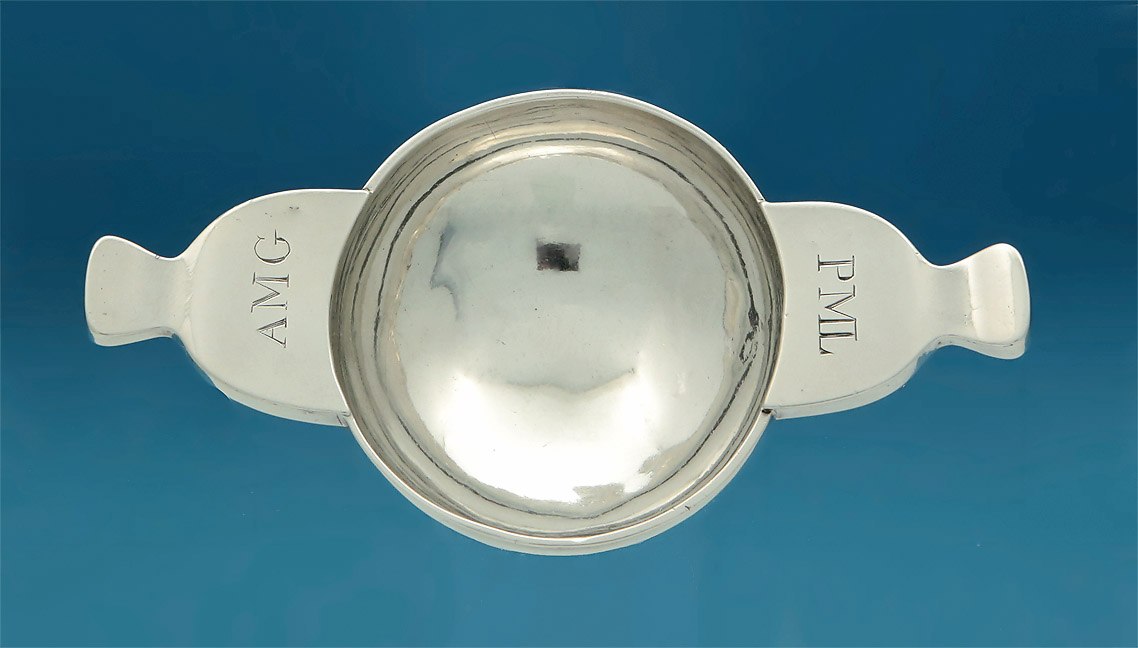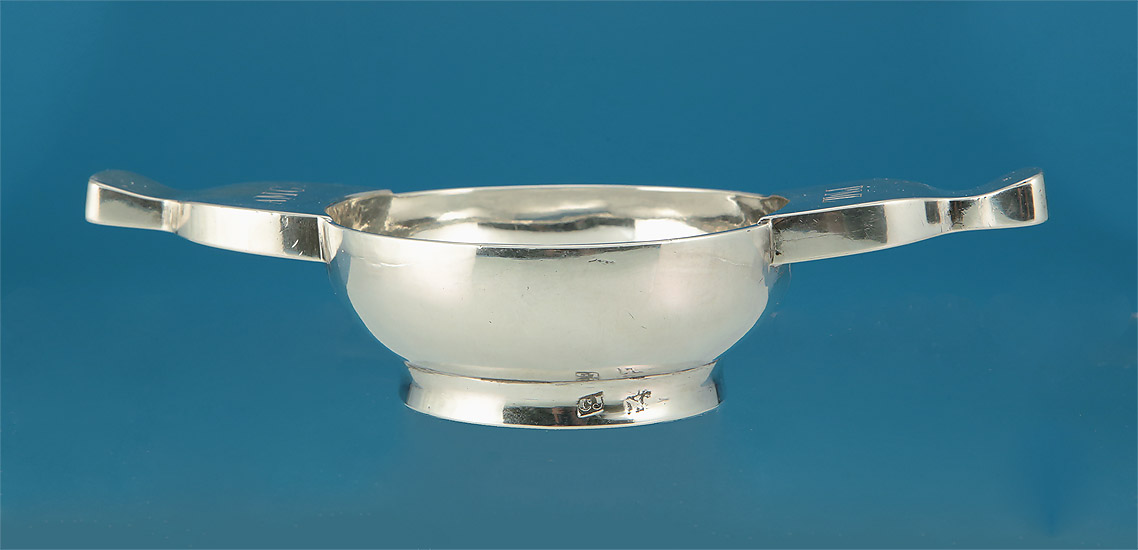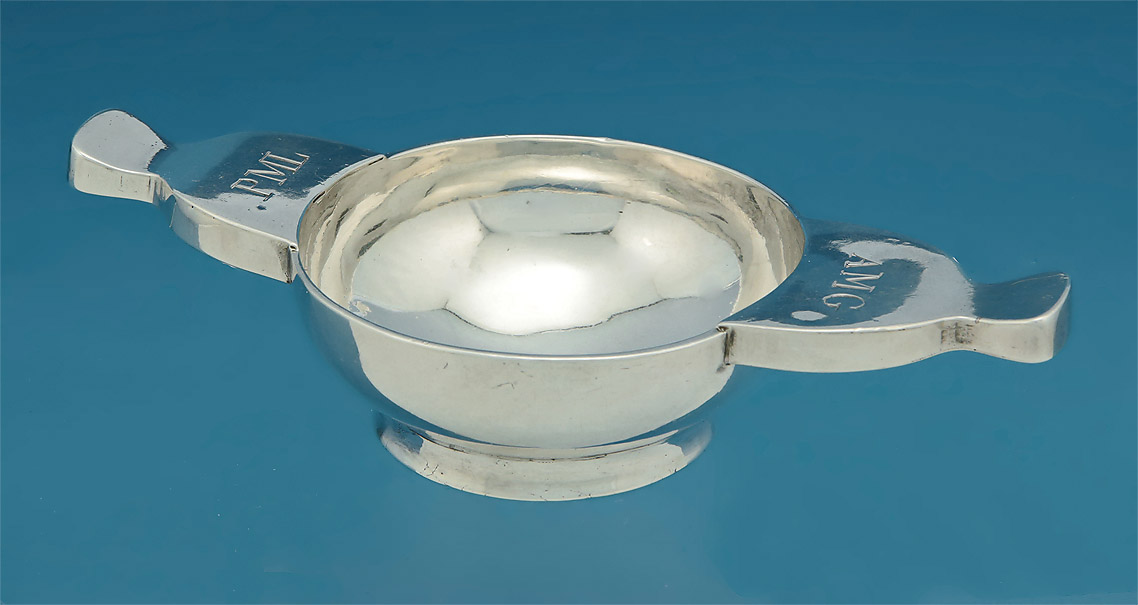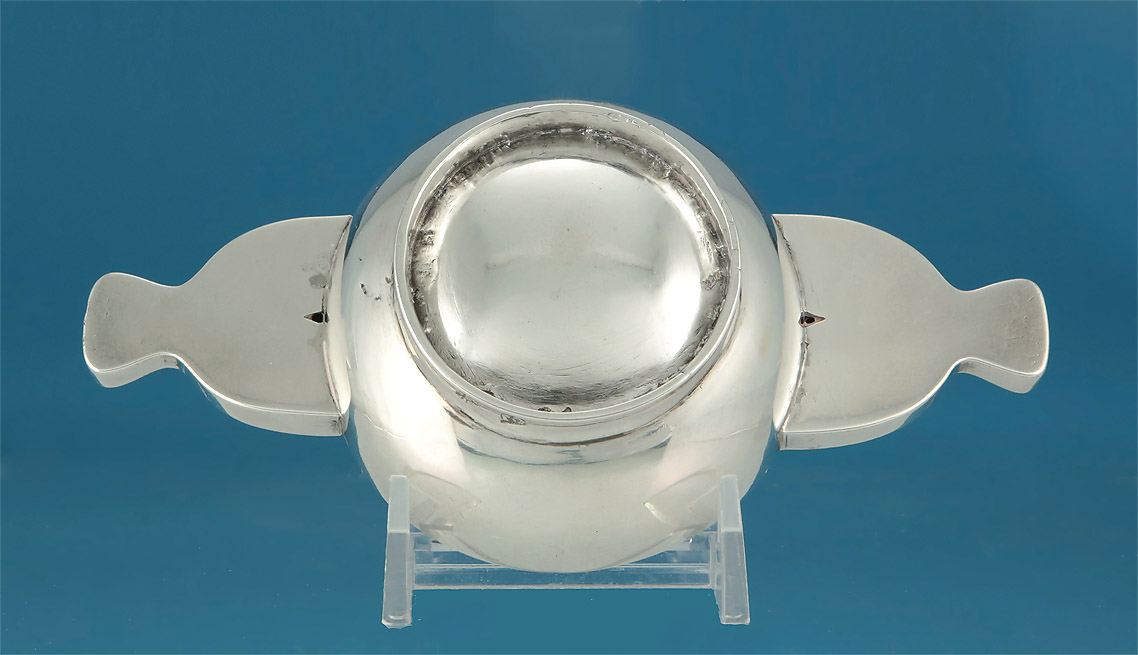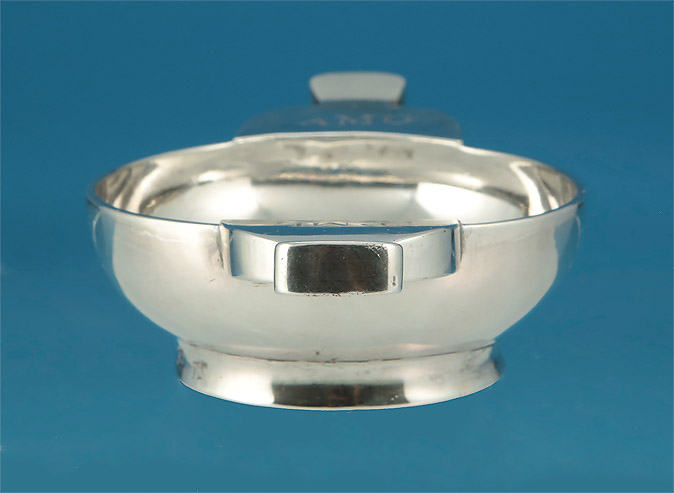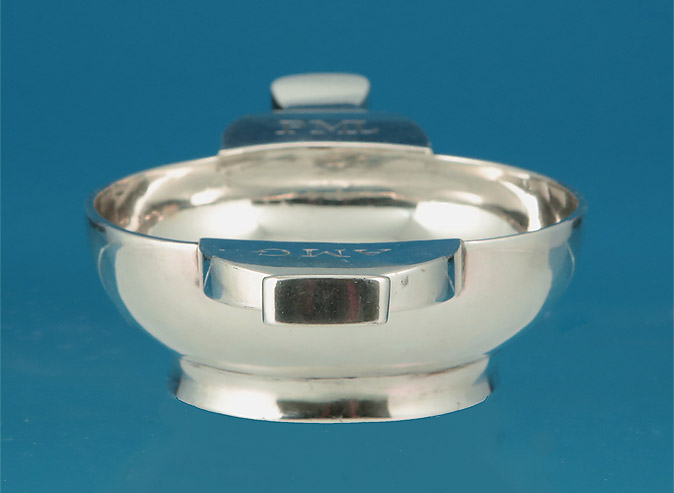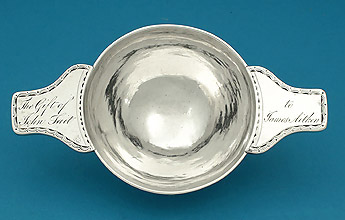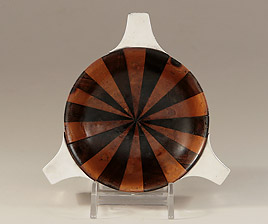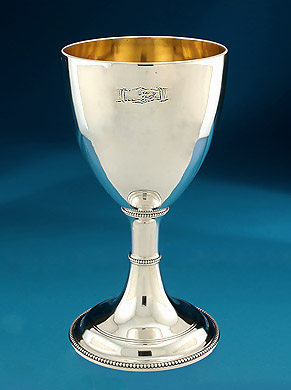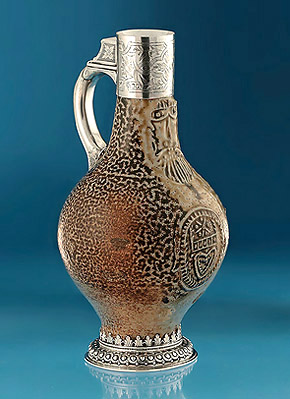Of heavy gauge silver, the circular bowl sided by twin shaped lugs,
the upper surfaces engraved AMG to one, and PML to the other,
raised on a plain collet footrim, the footrim marked
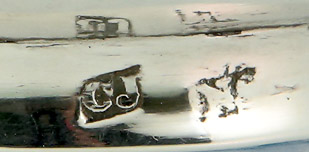
The quaich is a Scottish traditional "friendship" drinking vessel.
Its probable origin was the Baltic region,
>where "mazers" (large drinking bowls) were built in the staved manner from the medieval period.
Early quaichs were either carved from a single piece of wood,
or made by "feathering" together about 12 or 13 alternating light and dark staves (as above).
These were then held together by bands of willow or silver.
They generally had - and retain today - two or three short projecting handles called "lugs",
the best of these covered in silver.
The quaich was likely introduced into the Scottish Highlands in the early 16th century,
but not in use in Edinburgh and Glasgow until the late 17th century.
The name derives from the Gaelic word for cup - "Cuach" -
pronounced like "qwaygh", and probably only properly spoken by a true Scotsman.
Its favored use was for whiskey (spelled 'whisky' in Scotland) or brandy.
Ref : Scottish Applied Arts and Design, Lyon & Turnbull, Edinburgh, 13 August 2014
Inverness - a scarce Scottish provincial quaich
Charles Jamieson
13.2cm across the lugs, 3.2oz
Condition : Overall excellent with light wear to the marks;
expected small dents and scratches appropriate to age and usage;
possible solder reinforcement to each handle at bowl juncture
5-5/8" (14.3 cm) Wide, Over Handles / 2-7/8" Diameter, The Bowl
3.2 oz.
SOLD
Price :
Please Inquire
#7022 |
